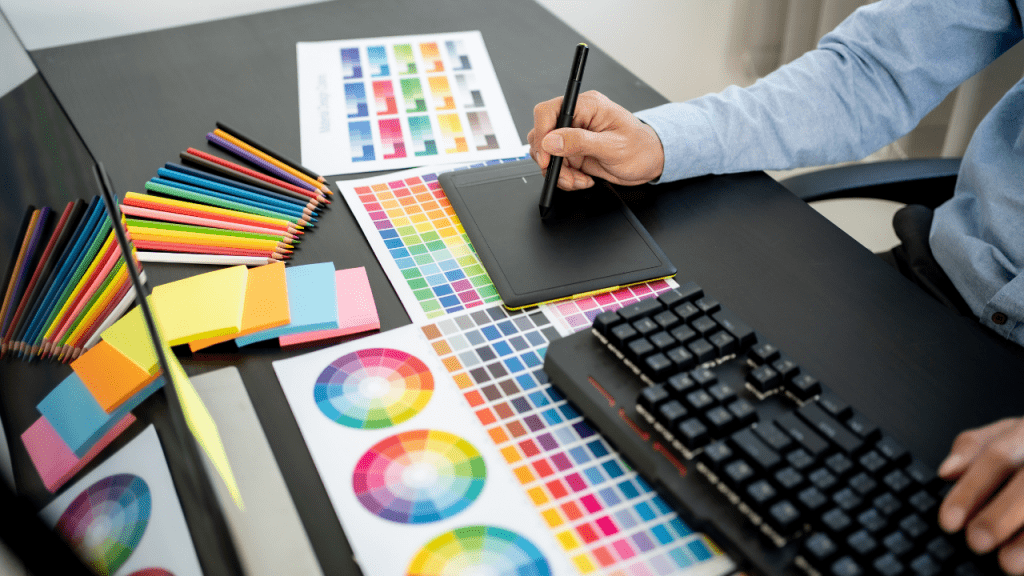Creating a flyer or poster is an easy way to help your company gain visibility. A flyer is an indispensable tool for marketing your business, as it allows you to reach a wide audience very quickly. A poster usually includes text and images, while a flyer usually contains only text.
However, choosing the right design is essential when creatingany type of promotional material for your business. That’s why creating a flyer or poster is a crucial step in the development of a company’s activities. In this article, we’ll show you how to create a flyer or poster step by step.
What information should be included in a flyer or poster?
Flyers and posters are advertising media subject to certain rules. Certain information must be included in your media. You must refer to the printer. Depending on the theme of your flyer or poster, display, for example, legal notices such as “Alcohol is bad for your health, consume in moderation” to promote alcohol or “For your health, eat five fruits and vegetables a day for food advertising”. Finally, don’t forget to mention the organizers of the event.
What graphic rules must be followed when producing flyers or posters?
When creating flyers and posters, especially large-format posters, fonts must be vectorized to avoid pixelation when printed. This is important, because the more you zoom in on the image, the greater the loss of quality and the more pixelated the result. Vectorization will prevent this degradation. It’s also important for poster designers to adapt their poster design to the path of the eye.
For Westerners, posters are read in “Z”. It’s important to follow this reading direction in order to understand the poster as quickly as possible. So it’s wise to put the media title at the top, the image in the middle and end with a slogan or text at the bottom.
Another important rule, white text on a black background is strictly forbidden on posters, as this layout is strictly reserved for administrations. Just as foreign words that appear on your flyers and posters must be legibly translated into French so as not to mislead your readers.
What format should you choose to create a flyer or poster?
The choice of flyer or poster advertising format will be decisive, as the format will depend on your objectives and the medium on which you wish to display the flyer or poster. Therefore, it’s very important to choose the right size for each medium. For a poster, choose a large format poster if you plan to use the poster for a bus stop, billboard or bus shelter. Conversely, if your poster is designed to be hung on a school wall, center… then, prefer the small poster format, A3 is the most well-known.
What color to use when creating a flyer or poster?
Keep the colors consistent with the logo colors to maintain harmony between the various communication media. If you already have a graphic charter, use it as a basis.
If you’re not sure where to start, here’s a design rule to help you choose colors.
- Choose up to 3 colors and apply the 60 – 30 – 10 rule.
- Choose a dominant color that covers 60% of the surface.
- Choose a secondary color that occupies 30% of the space.
- Choose a third color and it will take up 10% of your favor.
You’ll also find that certain colors suit certain environments better.
- Bright colors: For promotional offers, festive events, it’s a great way to attract attention.
- Solid color: to promote high-end services, products or events, black can also be used.
You should therefore adjust your color choices for advertising flyers according to your message and the image you wish to convey. In general, avoid using too many colors, which can lead to muddling and lose legibility and consistency.
How important is it to add images to your flyers or posters?
Choose an image that matches your objectives
The image will convey an emotion, an idea on the flyer or poster. For example, if you want to communicate about deforestation, images of bulldozers will be very evocative. S’it’s nighttime, you can have a good choice of photos of dancing with people.
Opt for an image matching your offer
Don’t forget that the photo should also describe your offer. So don’t take it out of context, and choose images that aren’t directly related to your productor service!
Go for originality
.
Make sure you choose the original image. Avoid using images that have already been viewed and reviewed. This is often the case with free images. On the other hand, if you choose this option, don’t hesitate to poke around, not first come, and modify it for personalization.
Find consistency and harmony
Don’t multiply images. It’s better to choose one so you don’t lose the readability of the flyer or poster. Maintain harmony between the colors of the image, the colors of the text and the other graphic elements.
What type of paper are your flyers and posters printed on?
As with formats, the types supported depend on your display location. When it comes to small indoor posters, the most commonly used papers are classic 135g gloss coated papers, or 170g matt or gloss coated papers for thicker, higher-quality papers. For large-format or even extra-large posters, it’s best to choose a specific paper that will make the poster durable, such as 150g backing paper, 260g polyester mesh or 120g backing paper.
.
For flyers, choose the type of paper that best suits your expectations and tastes.
How to create a flyer or poster without graphic design knowledge
.
If you’re not comfortable with graphic design, some online tools are very powerful and intuitive. You can also find templates on online editors such as Canva. There are also professional software solutions such as Photoshop or Illustrator. If these methods don’t work for you, don’t hesitate to contact a professional graphic designer or use the graphic design/ PAO support service on a platform such as BeFreelancr or Fiverr.
Vous avez aimé cet article ? Aidez-nous en mettant 5 étoiles !
Your page rank:









